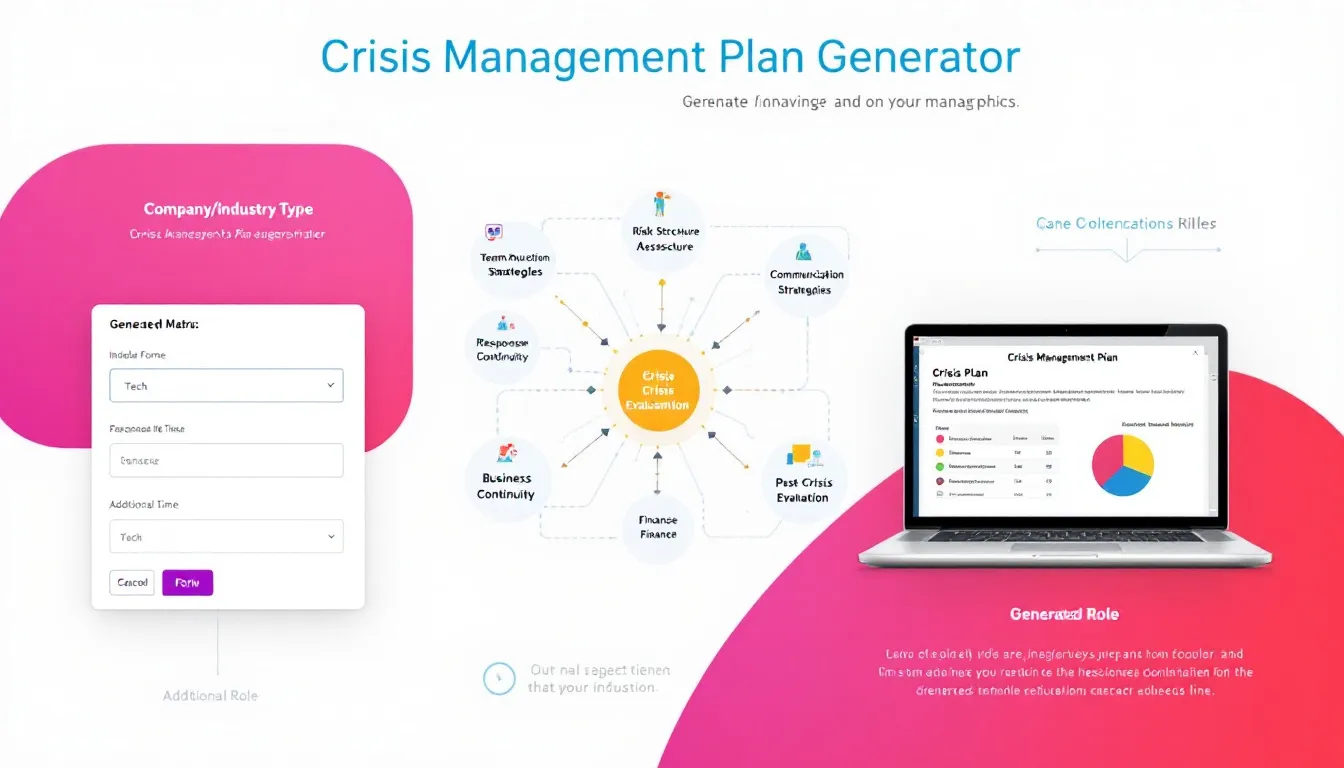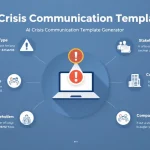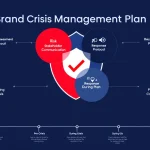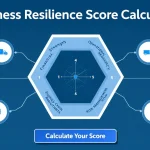Crisis Management Plan Generator
Is this tool helpful?
How to use the tool
1. Enter your company or industry type
Type the sector that needs protection. Two fresh examples:
- “Aerospace Manufacturing”
- “Non-Profit Charity”
2. Add an additional key role (optional)
Enhance the core team with a specialised position. Try:
- “Supply Chain Analyst”
- “Data Privacy Officer”
3. Click “Generate Crisis Management Plan”
The form sends your inputs to the server (action: process_llm_form). In seconds, you receive an industry-specific blueprint that covers response roles, communication templates and recovery steps.
4. Review, copy and distribute
Scan the recommendations, press “Copy to Clipboard,” and paste the plan into your policy repository, training slides or incident-response software.
Quick-Facts
- Downtime costs average $84k-$108k per hour (Gartner, 2022).
- 40 % of companies never reopen after a major disaster (FEMA, https://www.fema.gov).
- ISO 22301 recommends annual continuity plan reviews (ISO 22301:2019).
- 35 % of firms test crisis plans quarterly (PwC 2023 Global Crisis Survey).
FAQ
What is the Crisis Management Plan Generator?
The generator is a web form that sends your inputs to an AI API and returns a structured crisis plan tailored to your sector, roles and regulatory environment (OpenAI API docs, 2023).
Why should I update my plan every year?
Regulations, personnel and threats change. ISO 22301 requires annual reviews to keep continuity measures effective (ISO 22301:2019).
Can I create multiple plans for different departments?
Yes. Submit the form repeatedly with department-specific inputs—e.g., “Retail Operations” then “E-commerce”—and store each output separately.
How does the tool address compliance?
The AI references sector regulations, inserting clauses on HIPAA, GDPR or OSHA where relevant; legal counsel should still validate final text (HIPAA Journal, 2023).
Can I export the plan to PDF or DOCX?
After copying the text, paste it into Word or Google Docs and export to your preferred format; no data loss occurs in plain-text transfer (Microsoft Support, 2023).
How long does generation take?
Average response time is under 10 seconds with a stable connection (OpenAI API status dashboard, 2023).
What information is stored when I use the tool?
The server logs anonymous usage metrics and deletes content after 30 days, aligning with GDPR minimal-retention principles (EU GDPR, Art. 5).
Do startups benefit differently from large enterprises?
Startups gain quick, turnkey guidance without hiring consultants, while enterprises leverage the tool for consistent templates across global units (KPMG Global Survey, 2022).
Important Disclaimer
The calculations, results, and content provided by our tools are not guaranteed to be accurate, complete, or reliable. Users are responsible for verifying and interpreting the results. Our content and tools may contain errors, biases, or inconsistencies. Do not enter personal data, sensitive information, or personally identifiable information in our web forms or tools. Such data entry violates our terms of service and may result in unauthorized disclosure to third parties. We reserve the right to save inputs and outputs from our tools for the purposes of error debugging, bias identification, and performance improvement. External companies providing AI models used in our tools may also save and process data in accordance with their own policies. By using our tools, you consent to this data collection and processing. We reserve the right to limit the usage of our tools based on current usability factors.







